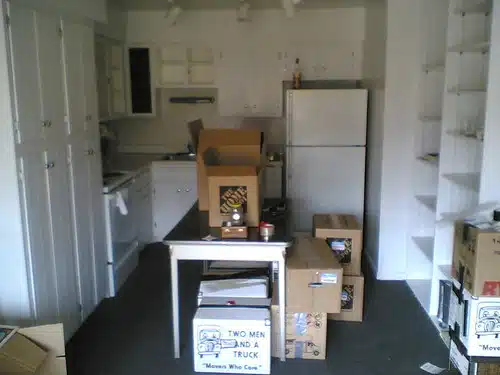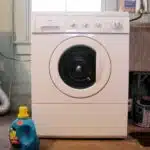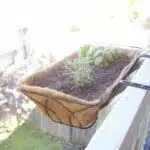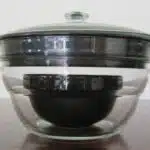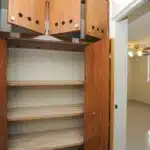Moving can be an overwhelming experience. As one navigates through the process, it is important to pay attention to detail, particularly when it comes to packing kitchen items. The kitchen is one of the most used spaces in a home and consists of fragile and bulky items that need extra care during the packing process. As a professional moving and packing consultant with years of experience, I have developed strategies that can help make the packing process smooth and stress-free.
When it comes to packing kitchen items, there are several factors to consider. Firstly, you need to sort through your belongings and decide what you want to keep or discard. Secondly, you need to ensure that fragile items are packed securely so that they do not break during transit. Additionally, bulky items such as pots and pans need special attention due to their weight and size. In this article, we will share some tips on how you can pack your kitchen items like a pro. By following these guidelines, you can rest assured that your cherished possessions will arrive at your new home safe and sound.
Assessing Your Kitchen Items
Before you start packing your kitchen items, it is important to assess what you have and identify the essentials. This will help you determine how much packing supplies you need and how to properly organize your belongings. Start by taking a thorough inventory of your kitchen items, including appliances, utensils, dishes, and food items. Make a list of all the things that you use regularly and cannot go without.
Once you have identified the essentials, it’s time to donate excess items that are no longer needed or used. This will not only help declutter your kitchen but also ensure that others who are in need can benefit from these items. Consider donating to local charities or organizations that collect donations for those in need. You can also sell some of your gently used kitchen items online through various platforms.
Sorting through your belongings is an essential step in packing your kitchen. As you go through each item, consider its usefulness and condition. Discard any broken or damaged items as they may not survive the move. If there are any duplicate items that serve the same purpose, choose one to keep and donate or discard the rest. By sorting through your belongings before packing, you can save time and space while ensuring that everything arrives at your new home safely.
Sorting Through Your Belongings
After assessing your kitchen items, the next step is to sort through your belongings. Downsizing is essential when it comes to moving as it helps you eliminate unnecessary items and reduce the overall volume of your possessions. Consider donating or selling items that you no longer need or use, such as duplicate utensils or appliances. This will not only lighten your load but also benefit someone else.
Maximizing storage space is another crucial aspect of packing your kitchen items. Start by using all available space in boxes and containers, making sure to fill them up to their maximum capacity without overpacking. Stack dishes and bowls vertically rather than horizontally to save space. Also, utilize drawer organizers for cutlery and small kitchen tools, and consider hanging pots and pans on a wall-mounted rack instead of storing them in a cabinet.
Once you have downsized and maximized storage space, it’s time to declutter your kitchen further by getting rid of expired food, unused spices, and old cleaning supplies. Check expiration dates on any perishable items before packing them up for the move, and dispose of anything that has gone bad. By decluttering your kitchen thoroughly before moving day, you’ll be able to start fresh in your new home with just the essentials needed for cooking and dining.
In order to prepare adequately for a move, downsizing and maximizing storage space are key factors to consider when packing your kitchen items. By taking these steps towards decluttering your kitchen as well, you’ll be able to streamline the process even further and start fresh in your new home without any unnecessary clutter weighing you down.
Decluttering Your Kitchen
- Sorting through your kitchen items is an important step when decluttering for a move.
- Assessing the condition of the items and determining whether they are necessary or not should be done before packing.
- Donating items that are still usable is an excellent way to reduce clutter and help others.
- Organizing and categorizing items by type will make packaging and unpacking more efficient.
- Disposing of any items that are damaged or broken should be done before packing to prevent further damage.
- Appropriate containers, such as boxes, bags, and bins, should be used to properly store items like utensils, appliances, pantry items, and items from the refrigerator, countertop, dishes, and cabinets, as well as the freezer.
Sorting
Sorting your kitchen items before a move can greatly reduce the stress and hassle of packing. To sort efficiently, start by designating three categories: keep, donate/sell, and toss. Assess each item based on its usefulness and sentimental value. For example, if you haven’t used that fancy juicer in over a year, it may be time to let it go. Be sure to also consider the size and weight of the item when deciding whether or not to keep it.
One common sorting mistake to avoid is holding onto items out of guilt or obligation. Just because Aunt Sue gave you that ugly teapot as a wedding gift doesn’t mean you have to keep it forever. Another mistake is not being honest about how often you use an item. It’s easy to convince yourself that you’ll use that fondue set someday, but if it’s been collecting dust for years, it’s probably time to part ways.
Tips for sorting efficiently include starting early so you have plenty of time to make decisions without feeling rushed, enlisting the help of a friend or family member who can offer objective opinions, and keeping in mind the space limitations of your new home. By taking the time to carefully sort through your kitchen items before moving day arrives, you’ll save yourself both time and money in the long run by only bringing along what you truly need and love.
Assessing
When it comes to decluttering your kitchen before a move, assessing your items is an essential step. This involves taking a closer look at your kitchen layout and storage options to determine what you should keep, donate/sell, or toss. By doing so, you can ensure that you only bring along the items that are truly useful and meaningful to you.
Assessing your kitchen layout means taking into account the size and shape of your new kitchen. If it’s smaller than your current space, you may need to be more selective about what you bring with you. Consider how often you use certain items and whether they’re worth the valuable storage space they take up. You may also want to think about any unique features of your new kitchen, such as built-in shelving or drawer organizers, that could affect how you organize and store your belongings.
Storage options are another important factor in assessing your kitchen items. Take stock of how many cabinets, drawers, and shelves you’ll have in your new home and plan accordingly. If storage is limited, consider investing in some space-saving solutions like hanging racks or stackable containers. Be realistic about what will fit comfortably in your new kitchen without feeling cluttered or overwhelming. By carefully assessing these factors, you’ll be able to make informed decisions about which items to keep and which ones to let go of before moving day arrives.
In summary, assessing your kitchen items before a move is crucial for streamlining the packing process and ensuring that you only bring along what’s truly necessary. Take into account factors like your new kitchen layout and storage options when deciding what to keep or get rid of. By doing so, you’ll not only save time and money on packing but also set yourself up for a more organized and stress-free transition into your new home.
Donating
When decluttering your kitchen before a move, it’s important to consider donating items that are still in good condition but no longer serve a purpose for you. Donating not only helps you clear out space in your home, but also allows others to benefit from items that might otherwise go to waste. Before making any donations, however, there are a few considerations to keep in mind.
First and foremost, make sure the items you plan on donating are clean and in good working order. Most donation centers won’t accept broken or heavily damaged items, so it’s important to inspect everything carefully before deciding what to donate. Additionally, some centers may have specific guidelines about what they will and won’t accept, so be sure to check with them ahead of time.
Once you’ve identified the items you want to donate and ensured they meet the necessary criteria, the next step is finding local donation centers. Goodwill and The Salvation Army are two popular options for clothing and household donations, while food banks or homeless shelters may be better suited for perishable food items. Many communities also have smaller local organizations that accept donations of various kinds, so do some research online or ask around to see what’s available in your area. By donating unwanted but usable items from your kitchen before moving day arrives, not only will you be helping others in need but also lightening your load when it comes time to pack up and move out.
Creating An Inventory List
While it may seem time-consuming, creating an inventory list is an essential step in packing your kitchen items for a move. It not only helps you keep track of what you have and what needs to be packed, but it also ensures that everything arrives at your new home without any damage or loss. However, some people may feel overwhelmed at the thought of cataloging all their kitchen items.
To make the process easier, start by using a moving checklist that includes all the items typically found in a kitchen. This will help you remember to list everything and ensure that nothing is overlooked. Organize your inventory by listing each item and its corresponding box number to make unpacking easier later on. Be sure to label each box with its contents and room destination.
Creating an inventory list may take some extra time upfront, but it will save you time and stress during the move. Not only will it help you stay organized, but it will also provide peace of mind knowing that all of your kitchen items have arrived safely at your new home. With your inventory complete, you can now move on to gathering the necessary packing supplies to start packing up your kitchen.
Gathering The Necessary Packing Supplies
Now that you have your inventory list completed, it’s time to start thinking about how to pack your kitchen items when moving. The first step in this process is organizing your space. Before you begin packing, take a look at your new kitchen and think about where everything will go. This will help you determine how best to pack your items.
When it comes to packing kitchen items, one of the biggest challenges is reducing waste. Many items in the kitchen are fragile or delicate, and require extra padding or protection during transport. To minimize waste, consider using items you already have on hand as packing materials. For example, dish towels can be used to wrap plates and bowls, while newspaper can be crumpled up and used as padding for glasses and stemware.
In the next section, we will discuss gathering the necessary packing supplies for wrapping fragile items such as glassware, dishes, and other breakable kitchen items. It’s important to take extra care when packing these items so they arrive at your new home safely. By following these tips for organizing space and reducing waste in your packing process, you’ll be well on your way to a successful move.
Wrapping Fragile Items
Did you know that approximately 60% of all moves involve the transportation of fragile items? This includes delicate kitchen items such as dishes, glassware, and appliances. Properly packing these items is essential to ensure they arrive at your new home in one piece.
Using bubble wrap, newspaper, or foam for fragile items can provide an extra layer of protection during the move. Bubble wrap is a popular choice as it provides cushioning and is lightweight. Newspaper can also be used but be cautious as the ink may transfer onto your items. Foam is another option for those looking for a more eco-friendly solution.
Tips for packing delicate kitchen items include wrapping each item individually with your chosen material and labeling each box clearly with its contents. It’s also important to fill any empty space in the box with packing paper or foam peanuts to prevent shifting during transport. Remember to pack heavier items at the bottom of the box and lighter items on top.
When it comes to packing dishes and glassware, there are a few additional steps to consider. Stay tuned for our next section where we will discuss how to properly pack these delicate items for a stress-free move.
Packing Dishes And Glassware
When it comes to packing dishes and glassware, there are a number of things to consider. Firstly, it’s important to have the right materials on hand. While bubble wrap and packing paper are the most commonly used materials for protecting fragile items, there are alternative materials that can be just as effective. For example, you could use towels or linens to wrap your dishes and glasses, or even newspaper if you’re on a budget.
Once you’ve got your materials sorted, it’s time to start packing. One technique that many professional packers use is to stack plates vertically, rather than horizontally. This can help prevent them from breaking during transit. Additionally, it’s important to make sure that all gaps in your box are filled with cushioning material to prevent any shifting during transport.
If you’re not confident in your own packing abilities or simply don’t have the time to do it yourself, using professional packing services may be a good option for you. These services will not only ensure that your items are packed properly and safely but also save you time and effort. However, if you prefer a DIY approach, there are plenty of tutorials available online that can guide you through the process step-by-step. Whatever option you choose, remember that taking care when packing delicate items will pay off in the long run by safeguarding your precious possessions during transit.
Moving on from dishware and glassware, securing pots and pans requires a different set of techniques altogether.
Securing Pots And Pans
As we wrap up our discussion on packing dishes and glassware, it’s important to remember that pots and pans also require special attention during a move. These kitchen staples can be bulky and awkwardly shaped, which makes them prone to damage if not packed correctly. To ensure their safe arrival at your new home, here are some tips for securing pots and pans.
Firstly, make use of bubble wrap to protect delicate handles or any other fragile parts of the cookware. This will help prevent scratches, dents, or other forms of damage during the moving process. Additionally, you may want to consider wrapping each pot or pan individually in bubble wrap before placing them in a box.
Secondly, organizing cabinet space is crucial when packing pots and pans. Begin by removing all items from the cabinets and thoroughly cleaning each piece of cookware before packing. Next, organize similar items together – for example, stack all saucepans together and place larger items at the bottom of the box.
By using these techniques for packing pots and pans, you can rest assured that your kitchen essentials will arrive safely at your new home. In the next section, we’ll discuss how to pack small appliances such as blenders or coffee makers so they too remain undamaged during transit.
Packing Small Appliances
Small kitchen appliances can be tricky to pack due to their fragile nature and bulky sizes. Before packing, it’s essential to organize your countertops by separating the items you want to keep from those you don’t need. This process will help you reduce clutter and keep only the necessary items that will fit in your new space.
Storing bulky appliances can be challenging, but with a little creativity, you can find ways to make them fit in your moving boxes. Consider wrapping each appliance with bubble wrap or newspaper and placing them in separate boxes. You may also want to use smaller boxes for lighter appliances, such as blenders or coffee makers, and larger ones for heavier items like mixers or food processors.
When packing small appliances, it’s crucial to label your boxes carefully. Labeling helps you identify what’s inside each box quickly and makes unpacking more manageable. Use color-coded labels or write the contents of each box on the side using a permanent marker. This step ensures that you’ll know exactly where everything is when it comes time to unpack at your new home.
Labeling Your Boxes
- Properly labeling boxes is critical when packing kitchen items for a move to ensure that the items are easy to locate upon arrival.
- Creating a labeling system is a great way to keep track of contents and location of each box.
- Boxes should be labeled with the room they are intended to be placed in, and the contents of the box should be listed as well.
- Be sure to write clearly on the labels, and use permanent markers to ensure that the labels will not fade or become unreadable.
- Color coding the labels can be an additional tool to help distinguish between different rooms and categories of items.
- Labeling boxes correctly is an important part of the moving process and will save time and energy when it comes to unpacking.
Labeling Boxes Correctly
When it comes to packing kitchen items for a move, labeling boxes correctly is crucial. Not only does it ensure that the items end up in the right place in your new home, but it also makes unpacking much easier and less stressful. One way to label boxes efficiently is by using color coding. Assign each room a different color, and then use colored stickers or tape to mark the corresponding boxes. This method allows you to quickly identify which boxes belong where, even from a distance.
Another important aspect of labeling boxes correctly when packing kitchen items is using specific labels for fragile items. These labels should be placed on any box containing breakable objects such as dishes, glasses, or ceramics. It’s important to use clear and concise language on these labels so that anyone handling the box knows exactly what’s inside and can take extra care when moving them.
Overall, taking the time to label your boxes correctly when packing your kitchen items can make all the difference in ensuring a smooth and stress-free move. Using color coding and specific labels for fragile items are just two ways to make sure everything ends up where it belongs in your new home. With proper labeling techniques, you can focus on settling into your new space instead of searching for misplaced items.
Creating A Labeling System
When it comes to moving, packing can be one of the most daunting tasks. With so many things to pack and label, it’s easy to get overwhelmed. However, proper labeling can make a huge difference in reducing stress during the move. Creating a labeling system is essential for ensuring that your belongings are organized and easily accessible when you arrive at your new home.
A good labeling system should be simple and consistent. Start by selecting a labeling method that works best for you. Some people prefer color coding while others prefer using specific labels for each room or item type. Whichever method you choose, make sure to stick with it throughout the entire packing process. This will help ensure that everything is properly labeled and easier to find once you arrive at your new home.
Organization tips are also helpful when creating a labeling system. Start by organizing items according to their use or function. For example, kitchen items can be grouped together based on whether they are used for cooking, baking, or serving. Once you have grouped everything together, label each box with its contents and location in your new home. This will not only save time during unpacking but also ensure that everything ends up where it belongs.
In conclusion, creating a labeling system is an important step when packing for a move. A good system should be simple and consistent while incorporating organization tips such as grouping items together based on their use or function. By taking the time to organize and label your boxes correctly, you’ll save time and reduce stress during the move itself and when unpacking in your new home.
Writing Clear Labels
Moving to a new home can be an exciting experience, but it also requires a lot of work. One of the most important tasks is packing and labeling your boxes. Clear labeling is essential for ensuring that you can quickly find what you need when you arrive at your new place. This means that legibility is crucial when writing labels. The importance of legibility cannot be overstated, as unclear or illegible labels can lead to confusion and wasted time.
One way to improve the clarity of your labels is by using a color coding system. Color coding can make it easier to identify different types of items or rooms in your new home, especially if you have many boxes to unpack. For example, kitchen items could be labeled with a green sticker, while bedroom items could use blue stickers. This will not only help you find what you need faster but also make organizing and unpacking more manageable.
Another helpful tip is to write clear labels that accurately describe the contents of each box. Avoid vague terms like “miscellaneous” or “stuff.” Instead, try to be specific about what’s inside each box, using descriptive words such as “books,” “dishes,” or “clothes.” It’s also essential to include the location where the box should go in your new home. For example, if you pack all your kitchen items together in one box, label it as such and indicate which room these should go into when moving into your new home. By taking these small steps when labeling your boxes, you’ll ensure that everything ends up where it belongs when you’re ready to unpack.
In summary, writing clear and legible labels is crucial for an organized move. Using a color coding system can help identify different types of items while ensuring accuracy and specificity in labeling contents will aid in quick identification during unpacking time. Remembering these tips will save time and reduce stress throughout the moving process!
Packing Your Kitchen Utensils
Did you know that the average American household has around 300,000 items? That’s a lot of stuff to pack when moving! The kitchen alone can be a daunting task. But fear not, with some smart organization and planning, packing your kitchen utensils can be a breeze.
Start by organizing drawers and cabinets. Empty them out and assess what you have. Donate or sell items that are no longer needed or used. Group similar items together, such as baking sheets or measuring cups, so they can be packed together. Use drawer dividers to keep utensils separated and organized.
When it comes to storing knives, safety is key. Wrap each knife in bubble wrap or paper towels and secure with tape. Place them in a designated knife block or knife roll for safe transport. Avoid packing knives loose in boxes where they could potentially cause harm to yourself or others handling the boxes.
Don’t let packing your kitchen utensils overwhelm you! By taking the time to organize and follow these tips for storing your knives safely, you’ll be well on your way to a successful move. Next up: packing your pantry items without causing any spills or damage during transport.
Packing Your Pantry Items
Now that your kitchen utensils are safely packed, it’s time to move on to the pantry items. Organizing spices and storing canned goods can be a bit tricky, but with some careful planning and a few tips and tricks, you can make sure everything arrives at your new home intact.
When it comes to organizing spices, it’s important to keep them in a cool, dry place away from direct sunlight. This will help prevent spoilage and maintain their flavor. Consider using a spice rack or drawer organizer to keep everything in its place. You may also want to label your spices so you can easily find what you need when unpacking.
Storing canned goods is another important consideration when packing up your pantry. Make sure to check expiration dates before packing anything – anything that is expired or close to expiration should be discarded. When packing, use sturdy boxes or plastic bins with lids that seal tightly. This will help prevent damage during transport and keep pests out of your food. Label each box with its contents so you know exactly what’s inside when you’re unpacking.
As you prepare for your move, remember that proper packing techniques are key to ensuring that all of your belongings arrive at your new home safely. By taking the time to organize spices and store canned goods properly, you’ll be one step closer to a stress-free moving experience. In the next section, we’ll discuss how to pack and store your kitchen appliances for safe transport.
Storing Your Kitchen Appliances
- Prior to packing, kitchen appliances should be thoroughly cleaned and wiped down to ensure no food particles remain.
- Additionally, labeling the appliance and its contents can help to make the unpacking process easier and more efficient.
- It is important to wrap any glass or metal parts of the appliance to prevent chipping or breakage during transport.
- Fragile items should be carefully wrapped with bubble wrap or other cushioning materials, and securely fastened with packing tape.
- When packing, use sturdy, stackable boxes to prevent items from shifting during transport.
- Place heavier items on the bottom, and fill any gaps or empty spaces with packing paper to avoid any damage during the move.
Cleaning
When packing your kitchen appliances for a move, it’s important to prioritize cleaning. Before packing anything, take the time to deep clean and disinfect all surfaces. This will not only ensure that your items are in good condition when you unpack them, but also prevent any potential health hazards.
To begin the deep cleaning process, remove all food particles and debris from your appliances. Use a damp cloth or sponge with warm soapy water to wipe down all surfaces thoroughly. Don’t forget to pay extra attention to areas that are often overlooked such as the inside of drawers and shelves. Once everything is wiped down, use a disinfectant spray to kill any remaining bacteria.
When it comes to packing, ensure that all items are completely dry before placing them in boxes or wrapping them in paper or bubble wrap. Moisture can cause mold and mildew growth during transit which can lead to damage or an unpleasant odor upon arrival at your new home. By taking the time to properly clean and pack your kitchen appliances, you’ll be able to start off fresh in your new space without any unwanted surprises.
Labeling
As you prepare to move your kitchen appliances, proper labeling is an essential step to ensure a seamless transition. Using color coded labels can make it easier to identify items and keep track of where they belong. This is especially important when dealing with fragile or heavy appliances that require special handling.
When labeling your kitchen appliances, it’s important to use clear and descriptive labels. Be sure to include the name of the item, its function, and any specific instructions for handling or assembly. This will help prevent confusion and ensure that your appliances are set up correctly in your new space.
In addition to labeling individual appliances, it’s also important to label boxes containing related items together. For example, you may want to label a box “Kitchen Gadgets” or “Cookware” instead of just listing individual items. By taking the time to label everything clearly and accurately, you’ll be able to unpack and organize your kitchen quickly and efficiently in your new home.
Wrapping
When it comes to storing your kitchen appliances during a move, proper wrapping is key to ensuring that they arrive at your destination in one piece. Using bubble wrap, newspaper, or both can help protect fragile items such as glassware and porcelain. It’s important to wrap each item individually and secure the wrapping with tape to prevent it from coming loose during transport.
Organizing kitchen items for efficient packing can also make a big difference in how easily you’re able to store your appliances. Pack similar items together in boxes labeled with their contents and room destination. This will not only make it easier to unpack once you arrive at your new home, but will also make it easier for movers or family members helping you pack to know where everything should go.
When wrapping larger appliances like refrigerators or stoves, be sure to use heavy-duty moving blankets or furniture pads in addition to bubble wrap or newspaper. These items are much heavier than smaller appliances and require extra protection against scratches and dents. Taking the time to properly wrap and organize all of your kitchen appliances will help ensure that they arrive safely at your new home, ready for you to set up and enjoy.
Transporting Your Kitchen Items
To minimize breakage of your kitchen items during transportation, it is important to take the necessary measures. First, make sure all fragile items are wrapped in bubble wrap or packing paper before being placed in a box. This includes dishes, glasses, and any other breakable kitchenware. It’s also a good idea to place a layer of cushioning material, such as packing peanuts or crumpled newspaper, at the bottom of each box.
For bulky kitchen appliances such as blenders and mixers, it’s important to properly secure them before moving. Remove any detachable parts and wrap them separately in bubble wrap or packing paper. Then, use heavy-duty tape to secure the appliance cords and wrap the entire appliance with bubble wrap or packing paper. Place them in sturdy boxes that can support their weight and avoid stacking heavy appliances on top of each other.
Ensuring that your kitchen items arrive at your new home intact requires careful planning and execution when it comes to packing and transporting them. By following these tips for minimizing breakage and properly securing bulky items like appliances, you can have peace of mind knowing that your beloved kitchenware will be ready for use once you’ve settled into your new home. In the next section, we’ll discuss how to efficiently unpack your kitchen items after arriving at your new place.
Unpacking Your Kitchen Items
According to a recent survey, the kitchen is one of the most challenging rooms to pack when moving. With numerous appliances, fragile dishes, and breakable glassware, it can be overwhelming to figure out where to start. However, with proper planning and organization, packing your kitchen items can be a breeze.
To begin with, consider purging any items that you no longer use or need. This will not only declutter your kitchen but also save you time and effort in packing unnecessary items. Once you’ve sorted through everything, start by grouping similar items together. For instance, pack all your plates and bowls together in one box and all your glassware in another box.
Tips for organizing:
- Use dividers or cardboard inserts to separate plates and bowls within the box.
- Pack delicate items like stemware in individual boxes with plenty of cushioning material like bubble wrap or packing paper.
Maximizing storage space is essential when packing your kitchen items. Utilize every inch of space by filling pots and pans with smaller items like spices or utensils. Stack pots and pans nest-style to create more room vertically inside boxes. Additionally, don’t forget about the insides of appliances like ovens or microwaves; you can store smaller items inside them too.
Finally, label each box clearly with its contents and which room it belongs in. This will make unpacking much easier when you arrive at your new home. By following these tips for organizing and maximizing storage space, you’ll be able to pack up your kitchen efficiently and stress-free!
Conclusion
In conclusion, packing your kitchen items may seem like a daunting task, but with a well-thought-out plan and the necessary supplies, it can be done efficiently. Remember to assess all your kitchen items before you start packing to ensure you have a clear idea of what needs to be packed and how. Sorting through your belongings and decluttering will help simplify the process.
Creating an inventory list is crucial in keeping track of your kitchen items during the move. Make sure you have enough packing supplies such as boxes, bubble wrap, and tape before starting the packing process. Storing your appliances safely and transporting your items securely will ensure they arrive at their destination intact. Lastly, unpacking your kitchen items should be done systematically so that it doesn’t become overwhelming. As the saying goes, “An ounce of prevention is worth a pound of cure,” so take the time to plan ahead for a seamless moving experience.
Image Credits
- “kitchen in mid-packing” by jm3 (featured)

